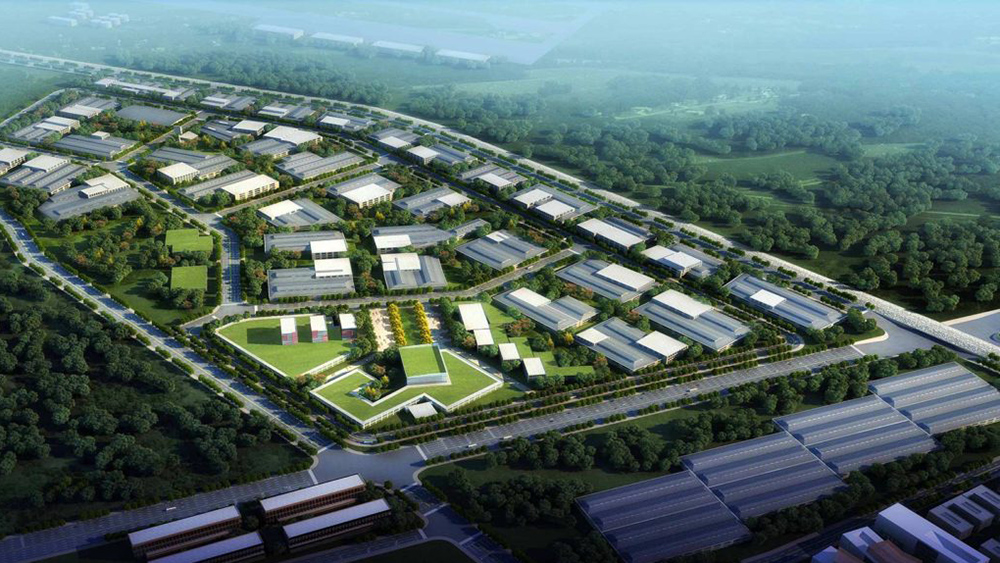Inside the Economic Zones: Why Global Manufacturers Are Choosing Bangladesh
Bangladesh, once primarily known for its ready-made garment (RMG) industry, is undergoing a major transformation in industrial development. At the heart of this change are the Economic Zones (EZs)—specially designated industrial areas backed by infrastructure, fiscal incentives, and policy reforms to attract both local and foreign investors.
As part of its Vision 2041, the Government of Bangladesh aims to become an upper-middle-income country and a global manufacturing hub. Economic Zones are a cornerstone of this strategy, offering the perfect environment for large-scale, export-oriented industries.
What Are Economic Zones?
Economic Zones are designated areas developed with specialized infrastructure, utilities, regulatory frameworks, and services that facilitate industrial growth. These zones offer:
-
Duty-free import of capital machinery and raw materials
-
Tax holidays and VAT exemptions
-
Custom-built infrastructure (roads, power, water, telecom)
-
Streamlined regulations and one-stop service facilities
These incentives are attracting multinational companies (MNCs) and regional manufacturers looking to diversify supply chains under strategies like China+1.
👉 Learn more at the official Bangladesh Economic Zones Authority (BEZA).

Why Economic Zones Are Game-Changers for Bangladesh
1. Strategic Location for Global Trade
Bangladesh is uniquely positioned between South Asia and Southeast Asia, with direct access to key regional markets including:
-
India (land and river borders)
-
China (via the BCIM corridor)
-
ASEAN countries (via maritime links)
-
The Middle East and Europe (through Chattogram and Mongla ports)
Major trade infrastructure upgrades like the Padma Bridge and planned deep seaports at Matarbari and Payra are further enhancing connectivity.
2. Incentives That Attract Global Investors
Investors in EZs receive a broad range of benefits. According to BEZA’s investor guide, incentives include:
-
100% foreign ownership
-
10-year corporate tax holiday (15 years for power sector)
-
Exemption from dividend tax for 10 years
-
Full repatriation of capital and profits
-
Simplified customs and banking procedures
These incentives are particularly attractive to Japanese, Korean, Chinese, and European manufacturers seeking low-cost yet scalable production bases.
Major Economic Zones Powering Bangladesh’s Growth
Let’s explore some of the most significant EZs already in operation or under development:
🔹 Bangabandhu Sheikh Mujib Shilpa Nagar (BSMSN)
Location: Mirsarai, Sitakunda & Sonagazi (Chattogram & Feni)
Size: 33,800 acres
Highlights:
-
Bangladesh’s largest industrial city
-
Over 150 companies already allocated land
-
Deep-sea port, LNG terminal, and power plants in progress
-
Focus on textiles, electronics, chemicals, and shipbuilding
👉 Explore the BSMSN masterplan on the BEZA website.
🔹 Japanese Economic Zone (Araihazar, Narayanganj)
Partners: Bangladesh & Japan’s Sumitomo Corporation
Highlights:
-
First fully foreign-managed EZ in Bangladesh
-
Target sectors: automotive, precision machinery, electronics
-
Infrastructure funded by Japan International Cooperation Agency (JICA)
This zone positions Bangladesh as a major candidate in the China+1 strategy, especially for Japanese manufacturers seeking to diversify supply chains post-COVID.
🔹 Korean EPZ (KEPZ)
Location: Anwara, Chattogram
Developed by: Youngone Corporation
Sectors: High-value textiles, electronics, IT, green technologies
Notable: Bangladesh’s first private EPZ, and a model for eco-friendly industrialization
Youngone is one of the largest investors in Bangladesh’s RMG and footwear industry and now expanding into wearable tech and performance fabrics.
🔹 Mongla Economic Zone
Location: Near Mongla Port, Bagerhat
Focus: Agro-processing, shipbuilding, food, leather
Advantage: Proximity to river ports and Khulna-Mongla railway
This zone is critical for southern region development and expected to serve as a hub for exports via the Bay of Bengal.
Who’s Investing in Bangladesh’s EZs?
Top global and regional players investing or expressing interest include:
-
Sumitomo Corporation (Japan)
-
Toyota Tsusho
-
Unilever
-
Samsung and LG (through local partners)
-
Youngone (Korea)
-
Wilmar International (Singapore)
-
Beximco Industrial Park (Bangladesh’s own conglomerate)
Foreign Direct Investment (FDI) is rising steadily. According to Bangladesh Bank, FDI inflows reached $3.4 billion in FY2023, with a growing share directed at manufacturing and EZs.
Focus Sectors in the Economic Zones
While garments continue to dominate exports, EZs are supporting diversification into sectors like:
-
Electronics and Assembly: Mobile phones, consumer electronics
-
Automobile Parts and Light Engineering
-
Agro-processing: Ready-to-eat foods, seafood, frozen fruits
-
Pharmaceuticals: APIs, generics for export
-
IT & BPO: Software parks and data centers
This sectoral diversity is part of a long-term push to reduce overdependence on RMG.
Skills, Infrastructure & Workforce Readiness
Bangladesh offers a young, tech-savvy, and cost-effective workforce—a key advantage for labor-intensive manufacturing. Government and private entities are working on:
-
Technical Training Institutes near EZs
-
Partnerships with SEIP and TVET programs
-
University collaboration for R&D (e.g., with BUET and North South University)
Improving power reliability, waste management, and digital connectivity is also central to long-term success.
Challenges to Watch
Despite the positives, some challenges remain:
-
Land acquisition delays in a few EZs
-
Coordination gaps between agencies and investors
-
Need for better logistics planning and multimodal connectivity
-
Ensuring environmental sustainability and social compliance
However, BEZA’s push for one-stop investor services and reforms in customs digitization are helping address many of these hurdles.
The Road Ahead: Global Ambition, Local Roots
Bangladesh aims to establish 100 Economic Zones by 2030, targeting the creation of 10 million new jobs and $40 billion in annual exports from EZs alone. This vision is supported by:
-
Public-private partnerships (PPPs)
-
International financing (World Bank, JICA, ADB)
-
A rising reputation as a stable investment destination
As global supply chains shift and investors seek resilience, Bangladesh’s EZ model provides scale, cost-efficiency, and long-term potential.
Conclusion
The rise of Economic Zones in Bangladesh is not just a story of industrialization—it’s a blueprint for inclusive, sustainable growth. With investor-friendly policies, a growing infrastructure network, and a youthful workforce, these zones are positioning Bangladesh as a serious contender in global manufacturing.
Whether you are a foreign investor, a policy analyst, or a local entrepreneur, now is the time to look deeper into Bangladesh’s economic zones. The opportunity is vast—and the foundation has already been laid.
✅ Explore more trade and investment insights at Bangladesh-Agent.com